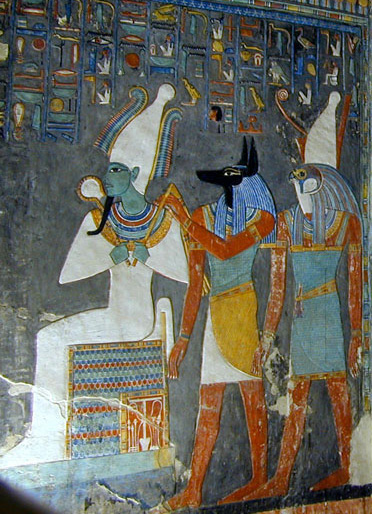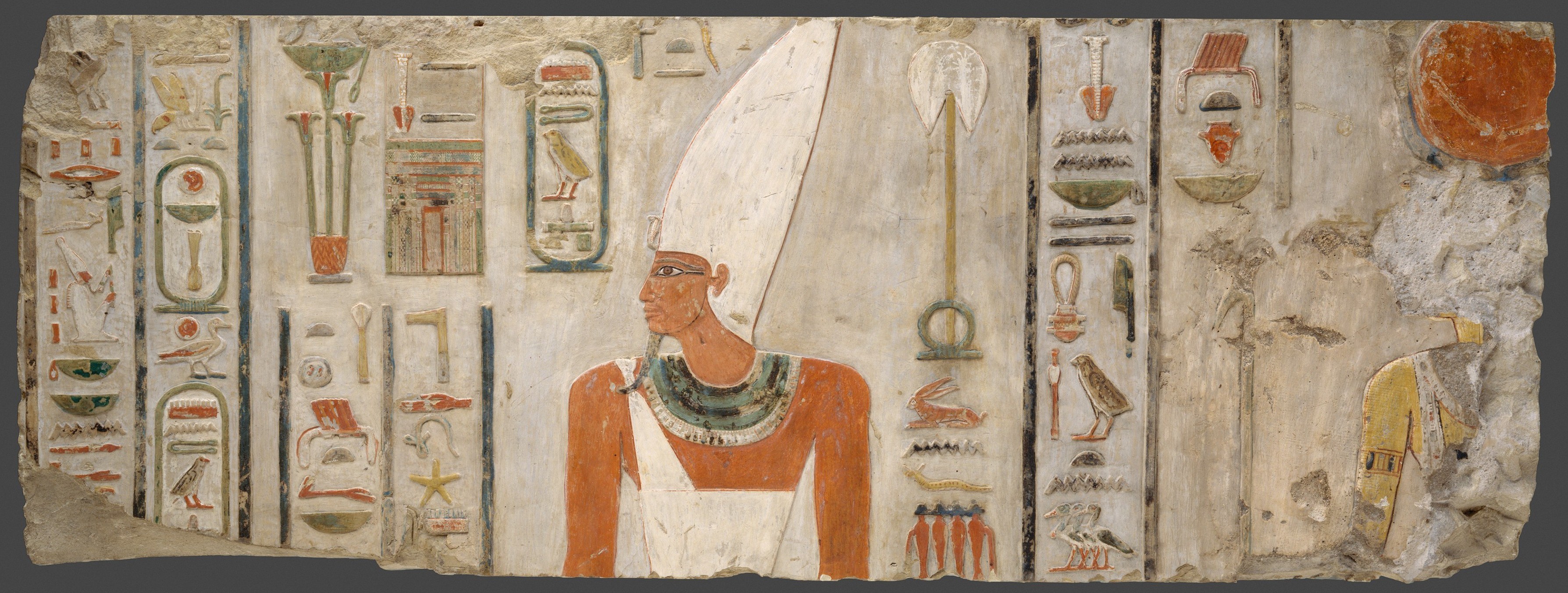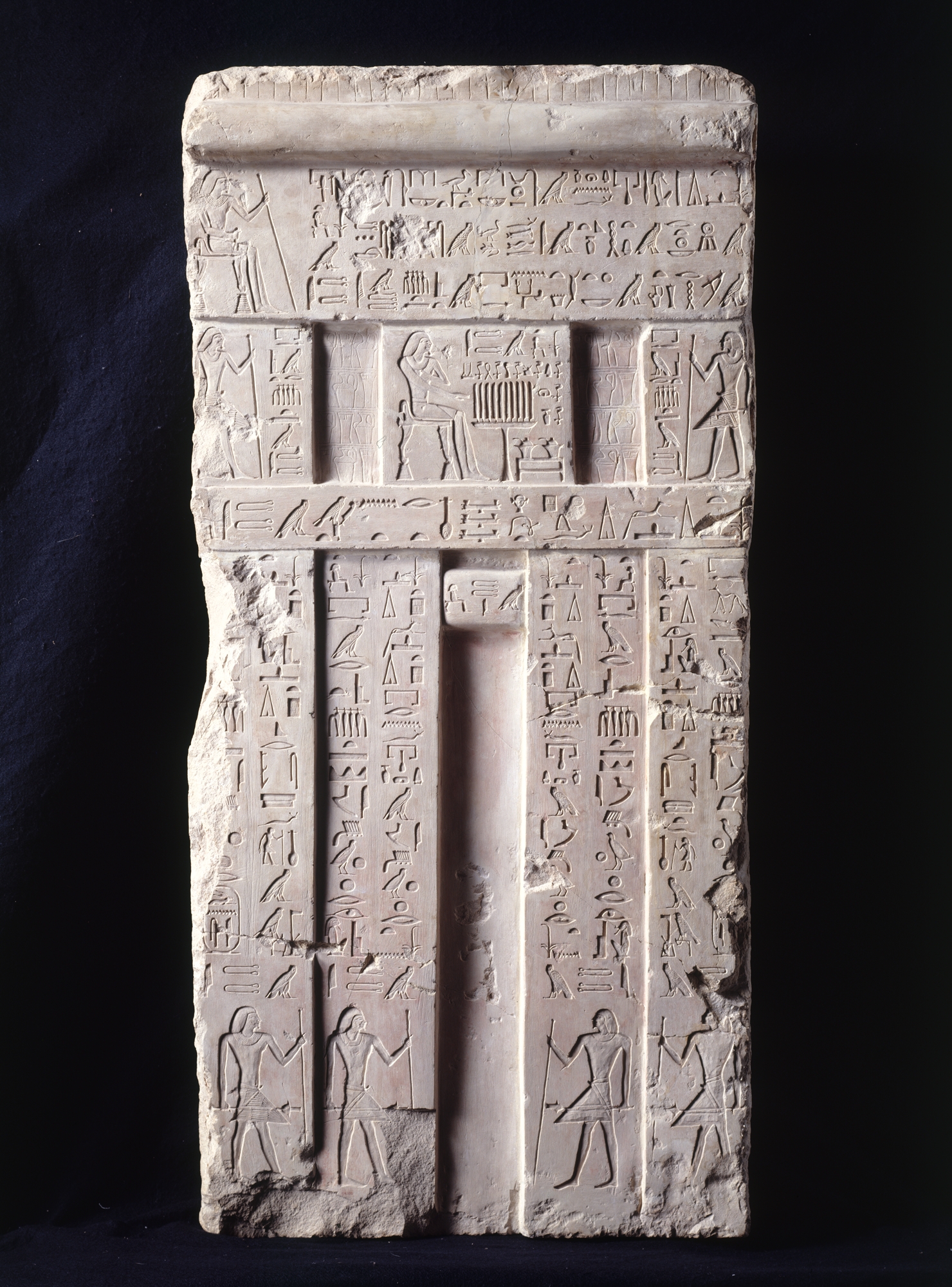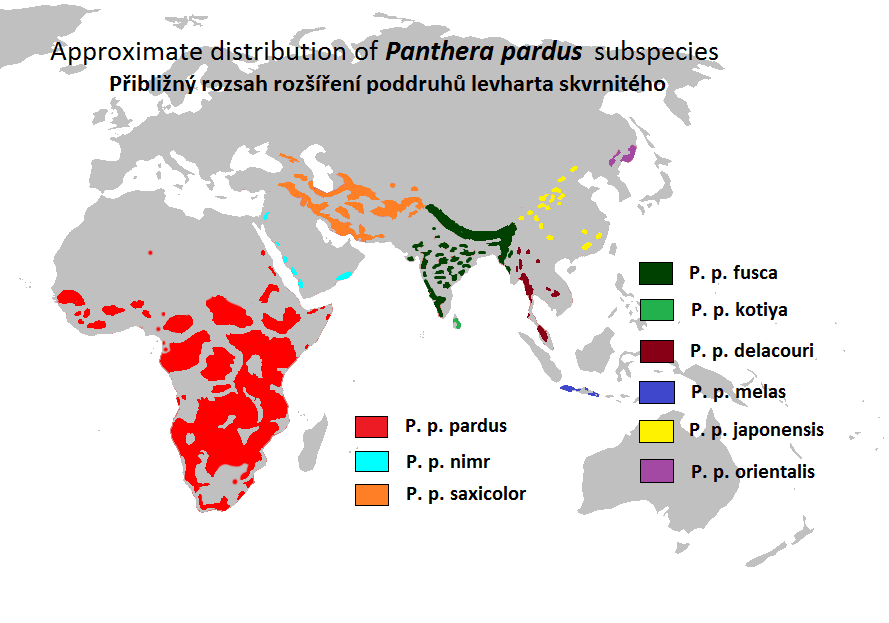|
Clothing In Ancient Egypt
Ancient Egyptian clothes refers to clothing worn in ancient Egypt from the end of the Neolithic period (prior to 3100 BC) to the collapse of the Ptolemaic Kingdom with the death of Cleopatra in 30 BC. Egyptian clothing was filled with a variety of colors. Adorned with precious gems and jewels, the fashions of the ancient Egyptians were made for not only beauty but also comfort. Egyptian fashion was created to keep cool while in the hot desert. Elements of Egyptian clothing In ancient Egypt, linen was by far the most common textile. It helped people to be comfortable in the subtropical heat. Linen is made from the flax plant by spinning the fibers from the stem of the plant. Spinning, weaving and sewing were very important techniques for all Egyptian societies. Plant dyes could be applied to clothing but the clothing was usually left in its natural color. Wool was known, but considered impure. Only the wealthy wore animal fibers that were the object of taboos. They were used on ... [...More Info...] [...Related Items...] OR: [Wikipedia] [Google] [Baidu] |
Tomb Of Nakht (2)
The Theban Tomb TT52 is located in Sheikh Abd el-Qurna, part of the Theban Necropolis, on the west bank of the Nile, opposite to Luxor. It is the burial place of Nakht, an ancient Egyptian official who held the position of a scribe and astronomer of Amun, probably during the reign of Thutmose IV (1401–1391 BC or 1397–1388 BC) during the Eighteenth Dynasty, the first dynasty of the New Kingdom. Architecture The tomb architecture and decoration conforms to the standard design of Theban tombs of the New Kingdom by using such scenes that are commonly found in contemporary tombs. Some of these decorations display differences from scenes found in Old Kingdom mastabas of Memphis, where one of the principal functions of the tomb was to ensure magical sustenance for the ka, whereas in the New Kingdom tombs, the primary function was to identify oneself on the tomb walls. The tomb has the typical T-shaped architectural design that was common for non-royal Theban tombs of the New Ki ... [...More Info...] [...Related Items...] OR: [Wikipedia] [Google] [Baidu] |
Ancient Egyptian Deities
Ancient Egyptian deities are the gods and goddesses worshipped in ancient Egypt. The beliefs and rituals surrounding these gods formed the core of ancient Egyptian religion, which emerged sometime in prehistory. Deities represented natural forces and phenomena, and the Egyptians supported and appeased them through offerings and rituals so that these forces would continue to function according to '' maat'', or divine order. After the founding of the Egyptian state around 3100 BC, the authority to perform these tasks was controlled by the pharaoh, who claimed to be the gods' representative and managed the temples where the rituals were carried out. The gods' complex characteristics were expressed in myths and in intricate relationships between deities: family ties, loose groups and hierarchies, and combinations of separate gods into one. Deities' diverse appearances in art of ancient Egypt, art—as animals, humans, objects, and combinations of different forms—also all ... [...More Info...] [...Related Items...] OR: [Wikipedia] [Google] [Baidu] |
Network Dress
Network, networking and networked may refer to: Science and technology * Network theory, the study of graphs as a representation of relations between discrete objects * Network science, an academic field that studies complex networks Mathematics * Networks, a graph with attributes studied in network theory ** Scale-free network, a network whose degree distribution follows a power law ** Small-world network, a mathematical graph in which most nodes are not neighbors, but have neighbors in common * Flow network, a directed graph where each edge has a capacity and each edge receives a flow Biology * Biological network, any network that applies to biological systems * Ecological network, a representation of interacting species in an ecosystem * Neural network, a network or circuit of neurons Technology and communication * Artificial neural network, a computing system inspired by animal brains * Broadcast network, radio stations, television stations, or other electronic media outlets ... [...More Info...] [...Related Items...] OR: [Wikipedia] [Google] [Baidu] |
Egyptian Woman
''Egyptian'' describes something of, from, or related to Egypt. Egyptian or Egyptians may refer to: Nations and ethnic groups * Egyptians, a national group in North Africa ** Egyptian culture, a complex and stable culture with thousands of years of recorded history ** Egyptian cuisine, the local culinary traditions of Egypt * Egypt, the modern country in northeastern Africa ** Egyptian Arabic, the language spoken in contemporary Egypt ** A citizen of Egypt; see Demographics of Egypt * Ancient Egypt, a civilization from c. 3200 BC to 343 BC ** Ancient Egyptians, ethnic people of ancient Egypt ** Ancient Egyptian architecture, the architectural structure style ** Ancient Egyptian cuisine, the cuisine of ancient Egypt ** Egyptian language, the oldest known language of Egypt and a branch of the Afroasiatic language family * Copts, the ethnic Egyptian Christian minority ** Coptic language or Coptic Egyptian, the latest stage of the Egyptian language, spoken in Egypt until the 17th cent ... [...More Info...] [...Related Items...] OR: [Wikipedia] [Google] [Baidu] |
Tunics Folded Clothing And Chest Of Kha
A tunic is a garment for the torso, usually simple in style, reaching from the shoulders to a length somewhere between the hips and the ankles. It might have arm-sleeves, either short or full-length. Most forms have no fastenings. The name derives from the Latin '' tunica'', the basic garment worn by both men and women in Ancient Rome, which in turn was based on earlier Greek garments that covered wearers' waists. The term is likely borrowed from a Semitic word *''kittan'' with metathesis. The word khiton () is of the same origin. Ancient era Roman tunic The Roman ''tunica'' was adopted by Roman citizens in the 3rd century BCE. It was often worn by Roman citizens and by non-citizens alike. However, citizens might wear it under the toga, especially at formal occasions. The length of the garment, the presence or lack of stripes, as well as their width and ornamentation, would indicate the wearer's status in Roman society. Roman senators, for example, used the ''laticlavus'', wi ... [...More Info...] [...Related Items...] OR: [Wikipedia] [Google] [Baidu] |
Middle Kingdom Of Egypt
The Middle Kingdom of Egypt (also known as The Period of Reunification) is the period in the history of ancient Egypt following a period of political division known as the First Intermediate Period of Egypt, First Intermediate Period. The Middle Kingdom lasted from approximately 2040 to 1782 BC, stretching from the reunification of Egypt under the reign of Mentuhotep II in the Eleventh Dynasty of Egypt, Eleventh Dynasty to the end of the Twelfth Dynasty of Egypt, Twelfth Dynasty. The kings of the Eleventh Dynasty ruled from Thebes, Egypt, Thebes and the kings of the Twelfth Dynasty ruled from Lisht, el-Lisht. The Periodization of ancient Egypt, concept of the Middle Kingdom as one of three golden ages was coined in 1845 by German Egyptologist Christian Charles Josias von Bunsen, Baron von Bunsen, and its definition evolved significantly throughout the 19th and 20th centuries. Some scholars also include the Thirteenth Dynasty of Egypt wholly into this period, in which case the Mi ... [...More Info...] [...Related Items...] OR: [Wikipedia] [Google] [Baidu] |
Old Kingdom Of Egypt
In ancient Egyptian history, the Old Kingdom is the period spanning –2200 BC. It is also known as the "Age of the Pyramids" or the "Age of the Pyramid Builders", as it encompasses the reigns of the great pyramid-builders of the Fourth Dynasty of Egypt, Fourth Dynasty, such as King Sneferu, under whom the art of pyramid-building was perfected, and the kings Khufu, Khafre and Menkaure, who commissioned the construction of the Giza pyramid complex, pyramids at Giza. Ancient Egypt, Egypt attained its first sustained peak of civilization during the Old Kingdom, the first of three so-called "Kingdom" Egyptian chronology, periods (followed by the Middle Kingdom of Egypt, Middle Kingdom and New Kingdom of Egypt, New Kingdom), which mark the high points of civilization in the lower Nile Valley. The Periodization of Ancient Egypt, concept of an "Old Kingdom" as one of three "golden ages" was coined in 1845 by the German Egyptology, Egyptologist Christian Charles Josias von Bunsen, Baron ... [...More Info...] [...Related Items...] OR: [Wikipedia] [Google] [Baidu] |
Egyptian Man
''Egyptian'' describes something of, from, or related to Egypt. Egyptian or Egyptians may refer to: Nations and ethnic groups * Egyptians, a national group in North Africa ** Egyptian culture, a complex and stable culture with thousands of years of recorded history ** Egyptian cuisine, the local culinary traditions of Egypt * Egypt, the modern country in northeastern Africa ** Egyptian Arabic, the language spoken in contemporary Egypt ** A citizen of Egypt; see Demographics of Egypt * Ancient Egypt, a civilization from c. 3200 BC to 343 BC ** Ancient Egyptians, ethnic people of ancient Egypt ** Ancient Egyptian architecture, the architectural structure style ** Ancient Egyptian cuisine, the cuisine of ancient Egypt ** Egyptian language, the oldest known language of Egypt and a branch of the Afroasiatic language family * Copts, the ethnic Egyptian Christian minority ** Coptic language or Coptic Egyptian, the latest stage of the Egyptian language, spoken in Egypt until the 17th cent ... [...More Info...] [...Related Items...] OR: [Wikipedia] [Google] [Baidu] |
Lion
The lion (''Panthera leo'') is a large Felidae, cat of the genus ''Panthera'', native to Sub-Saharan Africa and India. It has a muscular, broad-chested body (biology), body; a short, rounded head; round ears; and a dark, hairy tuft at the tip of its tail. It is sexually dimorphic; adult male lions are larger than females and have a prominent mane. It is a social species, forming groups called prides. A lion's pride consists of a few adult males, related females, and cubs. Groups of female lions usually hunt together, preying mostly on medium-sized and large ungulates. The lion is an apex predator, apex and keystone predator. The lion inhabits grasslands, savannahs, and shrublands. It is usually more diurnality, diurnal than other wild cats, but when persecuted, it adapts to being active nocturnality, at night and crepuscular, at twilight. During the Neolithic period, the lion ranged throughout Africa and Eurasia, from Southeast Europe to India, but it has been reduced to fr ... [...More Info...] [...Related Items...] OR: [Wikipedia] [Google] [Baidu] |
Leopard
The leopard (''Panthera pardus'') is one of the five extant cat species in the genus ''Panthera''. It has a pale yellowish to dark golden fur with dark spots grouped in rosettes. Its body is slender and muscular reaching a length of with a long tail and a shoulder height of . Males typically weigh , and females . The leopard was first described in 1758, and several subspecies were proposed in the 19th and 20th centuries. Today, eight subspecies are recognised in its wide range in Africa and Asia. It initially evolved in Africa during the Early Pleistocene, before migrating into Eurasia around the Early–Middle Pleistocene transition. Leopards were formerly present across Europe, but became extinct in the region at around the end of the Late Pleistocene-early Holocene. The leopard is adapted to a variety of habitats ranging from rainforest to steppe, including arid and montane areas. It is an opportunistic predator, hunting mostly ungulates and primates. It relies on it ... [...More Info...] [...Related Items...] OR: [Wikipedia] [Google] [Baidu] |
Pharaohs
Pharaoh (, ; Egyptian: '' pr ꜥꜣ''; Meroitic: 𐦲𐦤𐦧, ; Biblical Hebrew: ''Parʿō'') was the title of the monarch of ancient Egypt from the First Dynasty () until the annexation of Egypt by the Roman Republic in 30 BCE. However, the equivalent Egyptian word for "king" was the term used most frequently by the ancient Egyptians for their monarchs, regardless of gender, through the middle of the Eighteenth Dynasty during the New Kingdom. The earliest confirmed instances of "pharaoh" used contemporaneously for a ruler were a letter to Akhenaten (reigned –1336 BCE) or an inscription possibly referring to Thutmose III (–1425 BCE). In the early dynasties, ancient Egyptian kings had as many as three titles: the Horus, the Sedge and Bee ( ''nswt-bjtj''), and the Two Ladies or Nebty ( ''nbtj'') name. The Golden Horus and the nomen titles were added later. In Egyptian society, religion was central to everyday life. One of the roles of the king was as an intermed ... [...More Info...] [...Related Items...] OR: [Wikipedia] [Google] [Baidu] |
Crowns Of Egypt
The Egyptian civilization used a number of different crowns throughout its existence. Some were used to show authority, while others were used for religious ceremonies. Each crown was worn by different Pharaohs or deities, and each crown had its own significance and symbolic meaning. In early Egypt, one significant and important characteristic of the many crowns, was the color white. The color symbolized kingship or '' nisut'' in the early periods and Upper Egypt. The color blue was also an important color from the 18th Dynasty on. The crowns include the Atef, the Deshret, the Hedjet, the Khepresh, the Pschent, and the Hemhem. List of crowns of Egypt Cap crown Attested as early as the Old Kingdom, the Cap crown is most commonly associated with the Dynasty 25 Kushite Pharaohs, who are frequently depicted wearing the crown with two uraei. In that era, the crown was referred to as a ''sdn''. The remnants of what appears to be a Cap crown (JE 62699) were found on the mummy o ... [...More Info...] [...Related Items...] OR: [Wikipedia] [Google] [Baidu] |






